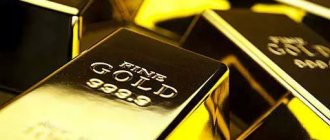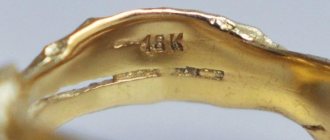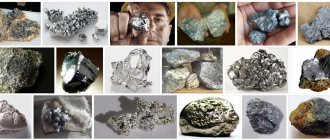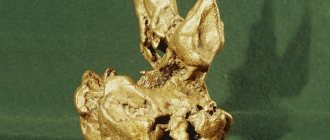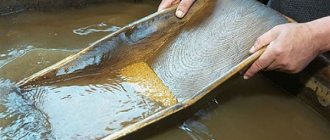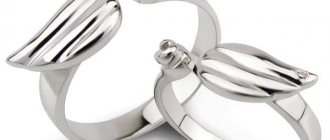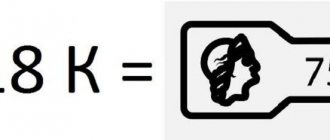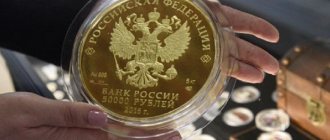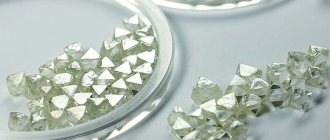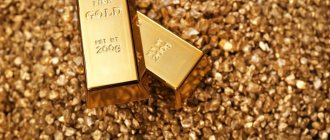Post updated: May 28, 2020
A gold bar is a standard form of a certain mass and quality. The word “gold bar” has become synonymous with high-grade gold. In the modern world, mainly products with a purity of 0.995 or 0.9995 and higher are in circulation.
The history of the origin of the gold bar is interesting. As large cities emerged and economies began to develop, a barter system emerged through which people could exchange goods and services. Gold and silver were widely used in various transactions, but their weight had to be checked every time they changed hands.
Approximately around 6.7 centuries BC. e., the inhabitants of Lydia found an original way out of this situation. It was an alloy of silver and gold, the so-called “electrum”.
It was a gold bar of a certain weight (for example, 20 grams) with a state stamp placed on it. The idea was progressive and therefore, about fifty years later, all the main retail outlets in the world began to use a similar practice.
Use of precious metal in various industries
The main industries in which this metal is widely used are:
- jewelry industry;
- creation of modern electrical appliances;
- optics;
- medicine;
- cooking;
- atomic research;
- production of weapons of mass destruction.
Only a tenth of the extracted noble element goes into industry, about 45% ends up in the gold and foreign exchange reserves of states and private individuals. The rest of the metal is used to make jewelry.
What is gold
In its pure form, gold is a shiny metal with a bright yellow color. Number 79 of the periodic table, international designation – Aurum (Au). One of the most “massive” but soft metals with a cubic lattice structure centered on the faces.
The name in modern languages goes back to a Proto-Indo-European root meaning “yellow, green, bright.” The Latin name, given in honor of the goddess of the dawn, Aurora, is also translated as “yellow”.
Gold crystals grown by chemical transport
History of the development of gold-bearing veins
Archaeologists suggest that gold mining as a branch of the national economy originated in the Middle East. From there, jewelry was exported to Egypt. The first finds in Sumerian tombs are more than 3 thousand years old.
One of the richest cultures in gold reserves was the ancient Inca Empire, which was located in the territory of modern Mexico, Peru and Chile. Their legacy is the mythical golden city of Eldorado, in search of which the Spanish conquistadors went.
In the 15th century, the first deposits were discovered in Mexico, Chile and Ghana. Three centuries later, the first gold mining cooperatives appeared in Russia. In 1823, the richest veins were discovered in Canada and America, which was marked by the outbreak of the famous “gold rush”. Even later, deposits were discovered in South Africa and Australia.
In what form can gold be found in nature?
A natural deposit can contain ore in two forms: grains or nuggets. Both species have fundamental differences, and the principle of their formation still remains a mystery to scientists.
grains
The most common variety. Gold fractions up to 15 g in size are called grains. As a rule, grains contain a minimum of impurities, so their extraction is considered the most economically efficient.
The method of their extraction is to sift the rock. The remaining grains of the precious metal gave rise to a gold rush that arose on three continents at once: North America, European Russia and Australia.
Nuggets
Pieces larger than 15 g are called nuggets. The formation of nuggets occurs much less frequently, but their value is much higher. The larger the size of the piece, the more valuable the find will be.
In some sources you can find mention of a 2.5-ton nugget, which was extracted from the ground in the 11th century. The nugget has not survived to this day, and finding something similar is now almost impossible. The specimens found in recent history are much smaller, but some still deserve attention:
- The Australian continent is remembered as the location of the record holder among nuggets. The giant is known as the “Holtermann Plate”. The weight of the find was 100 kg.
- The second place is occupied by a giant dug up on the island of Hokkaido. The name of the nugget is “Japanese”, weight – 71 kilograms.
- The Ural nugget weighing 36 kg got its name “Big Triangle” due to its unusual shape.
- The Magadan “Golden Giant” closes the circle of famous nuggets. True, its weight is quite modest, only 14 kg.
Nuggets are never pure gold. And impurities can change the color of the metal beyond recognition. Therefore, it is very difficult to detect a nugget, and only an experienced specialist can determine whether it belongs to a noble metal.
What is the difference between gold nuggets and gold nuggets?
From the point of view of the average person, both types of ore can be called gold. But for a gold miner the difference is quite noticeable:
- The grains contain up to 97% pure gold; nuggets are replete with impurities that are difficult to remove.
- Mining grains is more economically profitable.
- Nuggets are extremely rare.
Gold miners make money mainly from grains. Finding a good nugget is considered a great success and promises not so much income as prestige, creating a name for the miner.
Famous gold deposits
An interesting fact is that 90% of all gold production in the world is provided by the ten largest deposits. The richest and most famous include:
- Muruntau, Uzbekistan. According to preliminary estimates, it is 2.5 times more promising than the next field on the list.
- Grassberg, Indonesia.
- Pueblo Viejo, Dominican Republic.
- Yanacocha in the Cajamarca region, Peru.
- Carlin Trend, Nevada, USA.
- Goldstrike mine, which includes 3 deposits, USA.
- Cortez, Nevada, USA.
- Olympics in Russia, Krasnoyarsk region.
- Veladero mine in Argentina.
- Boddington Quarry, Australia.
How gold is formed in nature
In our world, gold microparticles are present in everything: animal and plant tissues, minerals, water. But until recently, it was not possible to understand how gold was formed and why it is so unevenly distributed throughout the Earth.
Origin theories
The scientific community officially recognizes two theories:
- cosmogonic;
- theory of conservation of matter.
According to the first version, particles of the yellow metal were brought to Earth by meteorites that bombarded our planet billions of years ago. Another theory states that gold is part of the Earth and was originally contained in its core.
Recent discoveries also support the second version. With the development of engineering, when scientists looked into the most mysterious depths of the sea, studied the composition of the ocean floor near tectonic faults, they managed to get an answer to the most exciting question, where does gold come from.
Here, at the very heart of our planet, the process of formation of elements containing gold was discovered. Under conditions of high pressure, high temperatures and an aggressive acidic environment, one of the most sought-after metals appears.
Solutions saturated with gold rise through cracks in the crust, but closer to the seabed the pressure drops, cold water causes a convection effect, and a chemical reaction begins, resulting in the precipitation of free gold particles or sulfide compounds. By the way, salt water contains quite a lot of dissolved gold, which means that the scientific community has yet to find a way to extract it.
Profitability and laws
Gold mining on an industrial scale can only be carried out if the deposit is profitable - at least 3 g per ton of ore. If a mine cannot provide this level of metal production, it is recognized as unprofitable, and work on it is stopped.
Until 2016, individuals were prohibited from mining metal even in depleted deposits. Violation of the law entailed punishment including criminal liability. However, the law has been revised, and now gold mining can be carried out by a private individual who has registered an individual entrepreneur.
Extraction of valuable metal is subject to licensing by the Rosnedra organization. Before obtaining permission, the applicant will have to win this right at an auction, and the cost of such a license amounts to billions of rubles if we are talking about promising deposits.
Without obtaining a special permit, you can mine precious metal by concluding a contract with a gold mining organization to carry out work on its territory.
Profit today and prospects for the future
Gold is a measure of the well-being of entire states. As an investment object, it shows a steady increase in value year after year, which makes it an excellent source of investment. According to experts, this trend will continue in the coming years.
Quality Analysis
In cases where there are no documents for the bullion, or its authenticity is in doubt, it is worth checking its quality. To make a quick quality analysis, a special touchstone is used. For example, they take a gold bar weighing 1 gram and make a line on the stone, then this line is compared with the lines created by standard (not in doubt) alloys of the same standard.
Then a glass instrument, previously dipped in acid, is drawn across the strokes containing gold. The acid leaves a dark mark in the presence of various impurities in the alloy. A darker trace indexes more impurities. Then a comparison is made between the reference strokes and the gold product, and the true gold content is determined. The method is not bad, takes little time and is reliable. Its disadvantage is that it shows the yellow metal content only in the surface part of the product.
Tools for checking the quality of gold.
Tools for searching for native gold. Table: the best metal detectors, parameters and prices
To search for gold on your own, you will need a miner's minimum. Tools needed for searching and processing metal:
- metal detector;
- metal washing tray;
- sieve or sifter;
- shovel;
- pick, chisel, hammer;
- magnifying glass, container for found metal.
Metal detectors are sold in specialized stores; they can also be bought inexpensively on Avito. It is recommended to choose equipment with the highest power and sensitivity to metal. Of course, high-quality equipment will not be cheap.
| Metal detector | Characteristics | Price |
| XP Metal Detectors Deus | detection depth – 1 meter, battery charge – up to 10 hours. | 62 thousand rubles |
| White's MX7 | Detection coverage – 1 meter 40 cm, waterproof, battery charging time – 20 hours. | 59 thousand rubles |
| Garrett ATX Deepseeker | Detects metals at a depth of 2 meters, works on all types of surfaces, light weight. | 154 thousand rubles |
Beach metal detector for gold
Counterfeits, fakes...
We have to disappoint you: more than 70% of gold imported into Russia is counterfeit. A lot of gold jewelry is imported without the hassle of customs and assay inspections, so be careful when purchasing jewelry.
Sometimes it is simply impossible to distinguish a fake, despite checking with a detector. Especially if the jewelry is imported.
It is better to buy jewelry in reputable stores and let it be produced by well-known Russian or foreign companies. The cost of the product will be higher than at sales and in dubious places, but the likelihood of running into a fake is less.
When purchasing, pay attention to the presence of a brand (falsifying it is a crime; most scammers try not to mess with this).
Carefully examine the “underside” of the product - the neater it is, the more carefully the stones are fixed, the higher the guarantee of authenticity.
Physico-chemical characteristics
Aurum is classified as a noble metal (along with silver, platinum and its group metals). They received this name based on their chemical properties: they do not rust, do not oxidize, and do not interact with almost all chemical elements.
| Properties of the atom | |
| Name, symbol, number | Gold / Aurum (Au), 79 |
| Atomic mass (molar mass) | 196.966569(4)[1] a. e.m. (g/mol) |
| Electronic configuration | [Xe] 4f14 5d10 6s1 |
| Atomic radius | 144 pm |
| Chemical properties | |
| Covalent radius | 134 pm |
| Ion radius | (−3e) 185 (+1e) 137 pm |
| Electronegativity | 2.64 (Pauling scale) |
| Electrode potential | Au←Au3+ 1.50 V, Au←Au+ 1.70 V |
| Oxidation states | −1,1,3,5 |
| Ionization energy (first electron) | 889.3 (9.22) kJ/mol (eV) |
| Thermodynamic properties of a simple substance | |
| Density (at normal conditions) | 19.3-19.32[2][3] g/cm³ |
| Melting temperature | 1337.33 K (1064.18 °C, 1947.52 °F)[2] |
| Boiling temperature | 3129 K (2856 °C, 5173 °F)[2] |
| Ud. heat of fusion | 12.68 kJ/mol |
| Ud. heat of vaporization | ~340 kJ/mol |
| Molar heat capacity | 25.39[4] J/(K mol) |
| Molar volume | 10.2 cm³/mol |
| Crystal lattice of a simple substance | |
| Lattice structure | cubic face-centered Cu type, space group Fm3m |
| Lattice parameters | 4.0781 Å |
| c/a ratio | 1 |
| Debye temperature | 170.00 K |
| Other characteristics | |
| Thermal conductivity | (300 K) 318 W/(m K) |
| CAS number | 7440-57-5 |
“Royal vodka”, a composition of high concentration nitric and hydrochloric acids, can dissolve gold.
Imitations
They have been able to counterfeit status metal since the times of the Egyptian pharaohs. It was not difficult: gold is too similar to other metals and ores. For example, pyrite is applied to an ornamental stone. The Spanish conquistadors took it from the Indians, believing it to be gold. Prospectors from the Alaska Gold Rush fell into the same trap.
It’s not for nothing that pyrite came to be called “fool’s gold.”
More noble options: electron (an alloy of aurum with silver) and polyxene (platinum plus other components that give the alloy a golden appearance).
The following types of “gold” have been created by man:
- French – copper + tin + zinc.
- Abyssinian – copper + zinc + aurum (0.5%).
- German (goldin) – copper + aluminum.
There are other types of brass-based counterfeits: tombak, pinchback, and others.
It is impossible to distinguish such a fake on your own. Home methods - exposure to iodine, testing with a lapis pencil - allow you to identify the origin of only the surface layer.
Testing for magnetism does not always help either.
Therefore, you should buy gold jewelry from trusted sellers and not immediately tear off the tag with the seal. You can take the item to a jeweler or pawn shop for further inspection.
Gold alloys and alloys imitating gold
As you know, pure gold is bright yellow, but at the same time there are other color variations of gold. These colors are usually obtained by combining gold with other metals in varying proportions.
For example: alloys that consist of 14 parts gold and 10 parts another metal are 14 karat gold, 18 parts gold and 6 parts another metal, 18 karat gold, etc.
This ratio is most often expressed in terms of fineness: 14/24 is equal to 585 fineness gold and 18/24 is 750 fine gold.
Red and rose gold
Rose gold is the result of an alloy of gold and copper , and is widely used for specialty jewelry. Rose gold jewelry became popular all over the world only at the beginning of the 20th century, and now only wedding rings are made from this alloy.
Red or rose gold is also called Russian, because back in the 18th century it was popular in Russia, but in the West they didn’t even know about it.
Basic formulas for the composition of rose or red gold:
18K Red Gold: 75% gold, 25% copper
18K Rose Gold: 75% gold, 22.25% copper, 2.75% silver
18K Rose Gold: 75% gold, 20% copper, 5% silver
Up to 15 percent zinc is also often added, which adds a yellowish-red hue to the alloy.
In ancient times, impurities during the smelting process often turned gold into a reddish color. This is why gold is described as red in many Greco-Roman texts and even many medieval works.
Green gold
Green gold is obtained by combining gold and silver. There is no such thing as pure green gold, only greenish-yellow gold.
The ratio of gold in this alloy is 75% gold and 25% silver (or 73% gold and 27% silver). Green gold was known back in 860 BC under the name electrum - a natural alloy of gold and silver.
Cadmium is also often added to the alloy - it is this that adds a green tint to the alloy and imparts a transparent effect. The alloy is 75 percent gold, 23 percent copper and 2 percent cadmium gives a light green tint, 75 percent gold, 15 percent silver, 6 percent copper and 4 percent cadmium gives a dark green tint. But it is worth considering that cadmium is a toxic metal and wearing jewelry containing cadmium for a long time is strictly prohibited.
Black gold
Black gold is obtained in four ways:
1. Rhodium-ruthenium alloy ,
2. Patination using sulfur and oxygen compounds.
3.Use during the extraction of amorphous carbon
4. Controlled oxidation - most often bringing to oxidation in the ratio of 75 percent gold and 25 percent cobalt.
Blue gold is an alloy of gold and indium . It contains 46% gold (about 12 carats) and 54% indium.
It is worth noting the compounds that are presented as gold, but in reality they contain little or no gold, so it is worth paying special attention to this list.
Bronze - a bright yellow alloy containing 90 percent copper and 10 percent aluminum - is most often passed off as gold because it is a low-cost method and is indistinguishable from the original to the naked eye.
In second place is an alloy called butt bronze, which was developed in the mid-20th century as an alloy for gilding and for making industrial, stage parts.
An alloy to which zinc is added, but in large quantities, is called batmetal. Mainly used in the production of tableware.
The French came up with the term "vermeil", which is used to designate silver coated with gold in small quantities. Vermeil is made only by fire.
Also worth noting is Hameltonmetal, which consists of 66.7 percent copper, 33.3 percent zinc. The alloy has a yellowish color and is used for gold coating of industrial parts.
The Americans came up with the word “goldine” - an alloy of copper and aluminum , used to make cheap, low-quality jewelry.
Durametal is an alloy of zinc, aluminum and copper , which has a golden-yellowish hue.
The alloy, which contains 83.6 percent copper, 9.34 percent zinc and 7 percent tin, has a golden hue, and completely imitates gold and is called Mannheim gold.
66 percent copper and 34 percent zinc, the alloy is similar in color to native gold and is passed off as raw gold.
The French also coined the expression "oreide" - "French gold". “French gold” is used to make inexpensive products.
An alloy consisting of copper and zinc is called tombak. Tompak was first used by London watchmaker Christopher Pinchbecker at the beginning of the 19th century; it perfectly imitates gold because it is resistant to corrosion and has high strength.
An alloy containing 57 percent copper, 18 percent platinum, 10 percent silver, 9 percent nickel and 6 percent zinc is platinum. Platinor has a beautiful golden color, but due to its high cost it is very rarely used as a gold substitute.
The alloy, which is used to make inexpensive jewelry, is called “an alloy of gold with titanium,” but in fact, it does not contain a single gram of gold, but at the same time it is a 100 percent copy of 585 gold.
Therefore, it is worth carefully checking jewelry before purchasing, and after purchasing, you should contact an independent expert and fully check the product for authenticity.
One ton gold coin!
Another way to estimate what one ton of gold looks like and how much volume it occupies is with the help of the famous Australian 1 ton gold coin “Kangaroo One Tonne Gold” of the Kangaroo Gold Bullion series! This coin is officially recognized as the largest gold coin in the world and is included in the Guinness Book of Records!
The Kangaroo One Tonne Gold coin, weighing one ton and measuring 80cm in diameter, is worth over A$70 million.
In 2011, the Australian Perth Mint began producing a unique gold coin! The whole process took 18 months and the result was a coin with a diameter of 80 cm made of gold with a purity of 99.99%. Its denomination is set at 1 million Australian dollars (AU$1 million), but the actual price, taking into account the value of the gold from which the coin is created, for 2022 is more than 70 million Australian dollars (AU$).
Australian gold coins of the Kangaroo Gold Bullion series - obverse and reverse of a 1 ton coin, in the lower right corner for scale a coin weighing 1 kilogram and another weighing 1 troy ounce.
Until 2012, the record for weight belonged to the Canadian gold coin “Large Maple Leaf” weighing 100 kilograms of pure gold!
But officially, the Australian Kangaroo One Tonne Gold coin has now become the largest in the world, especially since the Canadian coin was stolen from the Berlin Bode Museum in March 2022.
Where is it used?
For centuries, the gold metal has been used as a material for coins and jewelry. This is a status material from which royal and imperial crowns, crowns, and other attributes of power were made. History knows golden thrones.
Today, extracted raw materials are distributed in the following areas (%):
- jewelry – 40;
- reserves of national central banks and international financial organizations – 25;
- investment accounts – 25;
- industry, medicine - 5 each.
Gold coins were in use as a means of payment until the First World War (1914). They exchanged any paper bill for them.
Jewelry
Gold is the number one material for the upper price segment in jewelry. In jewelry, it is magnificent on its own and as a setting for precious stones.
Investment
Precious metal is a proven object for preserving and increasing capital.
Every country has a gold reserve. In Russia it is measured in thousands of tons.
Ordinary citizens are trying to create a family “pot”:
- Traditionally, people invest in bank bullion or bullion coins.
- In the jewelry segment, items with an unusual provenance (history) or authorship of famous brands are recognized as investment objects.
If we are talking about a mass-produced ring, necklace, or brooch, products of simple shapes are considered reasonable investments. When taking it to a pawnshop or selling it, the loss in value will be minimal. In such situations, even the most intricate gold jewelry is assessed as scrap for recycling. Accepted by weight at the so-called “technical” price.
Gold bars
The largest gold reserves in the world (as of 2018).
| № | Country/organization | Gold (tons) | Share of gold in the total volume of foreign exchange reserves of the state (%) |
| 1 | USA | 8133,5 | 74,5 % |
| 2 | Germany | 3369,9 | 69,6 % |
| 3 | International Monetary Fund | 2814,0 | — |
| 4 | Italy | 2451,8 | 66,6 % |
| 5 | France | 2436,0 | 62,4 % |
| 6 | Russia | 2170,0 | 18 % |
| 7 | China | 1842,6 | 2,3 % |
| 8 | Switzerland | 1040,0 | 5,2 % |
| 9 | Japan | 765,2 | 2,5 % |
| 10 | Netherlands | 612,5 | 67,3 % |
Medicine
Pharmacologically, aurum compounds are used in the manufacture of medications for the treatment of rheumatoid arthritis, tuberculosis, and other ailments. The radioactive isotope of the metal is used by oncologists.
Priorities have changed when using noble metals in dentistry. Until the mid-twentieth century, it was considered prestigious to have gold teeth (crowns). But today the precious metal is being replaced by metal-ceramics and other new materials. But those who want to look young “sew” gold threads under the skin.
Industry
Gold raw materials are indispensable in industry. So, for radio electronics it is a soldering material. It covers the mirrors of telescopes to ensure long-distance communications and is used in advanced industries, including nanotechnology.
The noble metal has even found use in cooking. Confectioners decorate finished products with it.
Food additive E175 is edible gold.
Scientists managed to obtain aurum from mercury by knocking out “extra” atoms. The alchemists' dream came true, but the cost of the final product exceeded the market price by orders of magnitude.
The most famous deposits of gold nuggets found in Russia, photos without processing
According to geological maps, the largest gold deposits are concentrated in the territories of the Far East, the Urals, and Siberia. But it is not possible to find native precious metal everywhere.
- Natalka or Natalka gold-quartz deposit. The name is derived from the name of the daughter of the discoverer-geologist D. Aseev, Natalya. Located in the Omchak River basin, 390 km from Magadan.
- Nezhdaninskoye field. Located in Yakutia, in the Aldan River basin. The mine, discovered in the 50s of the last century, marked the beginning of the opening of the village of the same name.
- Olimpiadinskoye and Blagodatnoye. The largest deposits are located in the Krasnoyarsk Territory at a distance of 25 km from each other.
- Darasun gold deposit. Location: Trans-Baikal Territory, Chita region. The development of Darsun began 160 years ago.
- The Tash-Targanka River flows in the territory of Miass in Bashkiria. Now gold is not mined here, but literally 200 years ago Tash-Targanka produced so many nuggets that a gold-mining plant had to be opened in Miass.
- The moss swamp is located in the South Ural region, Chelyabinsk region. Gold is found here in bulk. The Bolsheshaldinskaya placer deposit is also located here.
- Sverdlovsk quarries. The main Ural gold deposits are concentrated in the Sverdlovsk region. Of these, 75% are placers. The Kamushki quarries are located 50 km from Yekaterinburg. Since the century before last, prospectors have been searching for precious metal here.
- Kajaran and Sotskoye fields of Armenia. Gold deposits located near the cities of Sotsk and Kajaran were discovered and developed under Soviet rule.
Why is the metal often confused with pyrite? What geologists say about gold nuggets
With the onset of the gold rush, ships filled with pyrite sailed from America to Europe. Due to its external resemblance, this breed was often confused with gold. In fact, pyrite is iron pyrite, also called fool's gold or the stone of madmen. Gold and pyrite can be distinguished by several characteristics:
- Form. Pyrite is a crystal-shaped stone with sharp edges; gold has soft, rounded edges.
- Smell. Pyrite contains more than 50% sulfur, so it has a specific rotten smell. Noble metal has no odors.
- Size. Pyrites can occur in different sizes. Gold is more often found in bulk, less often in small pieces, and even less often in large ingots.
- Hardness. Noble metal is very soft and malleable, so a ligature is used to make jewelry or other products. A gold bar can easily be pierced with a needle and can be tasted on the tooth. Pyrite is hard.
Gold nuggets
Pyrite and gold are similar in color, brilliance, and density.
Geologists studied the similarities between the two rocks:
- A. Betekhtin “Pyrite group. Mineralogy Course";
- K. Gurlitt “Manual Mineralogy”;
- A. Smolin “Golden nuggets of the Urals”.
Only centuries later, pyrite ceased to be known as a deceiving stone, and people learned to use its beneficial properties.
Table: characteristics of native gold
What samples are classified as nuggets? A gold nugget is considered to be a single ingot, the minimum weight of which must reach 2 grams. There are known cases when nuggets weighing almost a hundredweight were found.
Native gold has the following characteristics:
| Property | Description |
| Color | Thick yellow, giving off a silvery sheen. It can fade and become brighter, acquire shades: white, pinkish, greenish, reddish. |
| Transparency | Absent |
| Shine | Metal |
| Surface | It can be either smooth or rough. There are notches and grooves. Often a nugget is found “jacketed,” that is, the piece is covered with some other rock. |
| Hardness | Noble metal is very soft. Mohs scale 2.5-3 |
| Form | There is no need to expect complete symmetry in the outline of a piece of gold bar. It may look like a geometric shape, an animal, a plant, a flat leaf, a feather, or a branch. |
| Try | From 800-950. A gold nugget contains minimal impurities. For example, metal of 585 standard cannot be considered native. |
Methods for extracting gold from stone
Nuggets may contain additional mixtures, metallic and mineral. You can get rid of them by refining - purification. Refining methods:
- The dry method involves purifying gold through chlorine gas.
- Chemical or wet - separation of gold from impurities using various chemicals, such as acids.
- Electrolysis. In this case, the gold is separated using an electric current.
The methods are used both in laboratories and in industrial production, rarely at home.
Hypotheses for the formation of gold nuggets
There are several theories about where gold nuggets come from in the ground.
- Snowball. Gold is a very soft and malleable metal. The golden particles, moving and connecting with each other, stick together, like snowflakes forming a snowball.
- Sediment. Since gold is heavier than water, it sinks down. Gold particles are layered on top of each other until a nugget is formed.
- Large gold stones can fall apart under external influences. Such gold nuggets are very rarely found in nature.
- Blur. Many ancient gold deposits may be located in river or stream beds. The remains of gold veins are washed away by currents.
- Upper layer. All nuggets are located on the upper layers of ore. It has been proven by geologists that these places will definitely have gold deposits.
